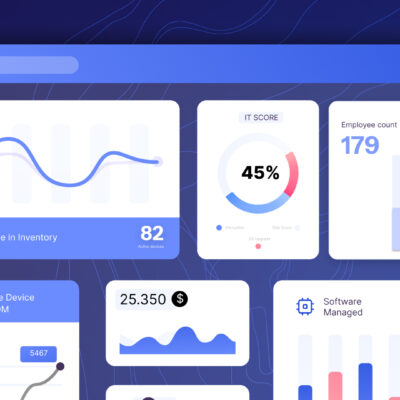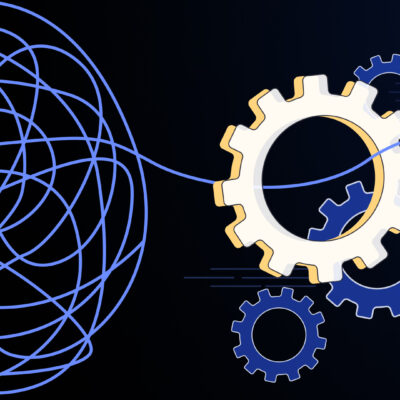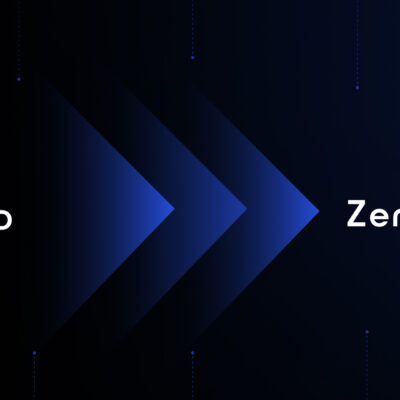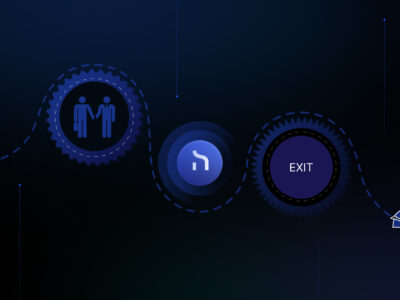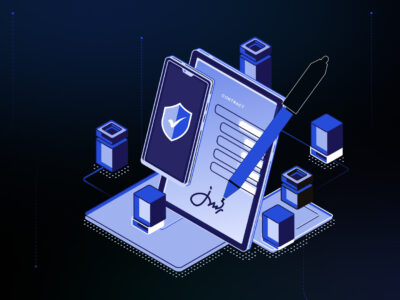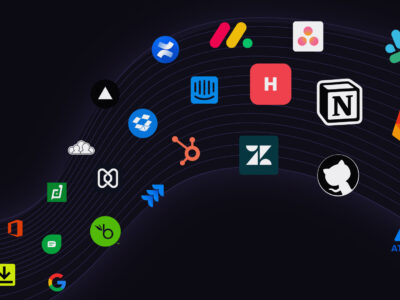The Top 13 IT Challenges Businesses Face Today
One of the secrets to corporate success is the ability to overcome obstacles. Challenges with technology are no exception. Effectively resolving technical issues that impact both consumers and staff can help a company stand out from the competition. But what are these obstacles that businesses face today? Here are the top 13 IT challenges that most companies encounter.
1. Successful Remote Work

Since IT and communications have become more sophisticated, employees have started working from home more frequently. This trend has been rising for years. Enforced remote work has demonstrated its numerous benefits during the pandemic, and it is probable that many organizations will continue along this path, maybe utilizing a hybrid approach.
If these models are to operate efficiently and securely, new technologies will be required. A company with remote working should at the very least be utilizing cloud-based platforms like software as a service (SaaS), platform as a service (PaaS), and infrastructure as a service (IaaS). Your team will be able to operate more effectively and conveniently from various places with these.
2. Strengthening Cybersecurity

Security and hacking have been in conflict since the beginning of IT, and the threat grows along with technological complexity. Although external threats pose the majority of the risk, human error still poses a serious challenge.
The number of cyberattacks grew in 2021, and it will continue in 2022 due to vulnerabilities created by remote working. Ransomware, phishing, and distributed denial of service assaults will be the most frequent attack types.
Read more about The Most Common Types of Cyberattacks and How to Prevent Them.
Besides this, companies should also adhere to IT compliance standards. Every organization should invest in reliable end-to-end cybersecurity. With an MSP like ZenAdmin, the headache of setting up cybersecurity can be lifted from your shoulders without having to spend countless hours and manpower doing it in-house.
3. Increasing Your Team’s Cybersecurity Awareness

Although software vulnerabilities in IT systems are constant and require strong protection, some of the largest risks to enterprise cybersecurity originate from personnel errors. These can include weak passwords to carelessly accessing attachments, and the issue will only become worse as more employees use their own technology at home.
It’s crucial that every employee in your organization is aware of what they must do to secure your systems from intrusions rather than thinking about having separate security teams. Your team should get regular cybersecurity awareness training from professionals. Using ZenAdmin’s 24/7 support, your employees can just be one chat away from getting the help they need to boost their own and the company’s security.
See The Easy Way to Manage Your IT Security here.
4. Avoiding Hackers

It’s critical to maintain modern cybersecurity solutions since hackers are continuously coming up with new ways to compromise IT systems. Hackers use a variety of attack techniques, including deep fake technologies and penetration tools, and have a wide range of goals, from profit to political instability.
Although techniques for detecting and preventing cyber threats are continually changing to address increasingly serious threats, keeping up with hackers requires updating software on endpoints, servers, and mobile devices. While internal patching is still possible, many organizations now rely on specialized MSPs that can continually access and monitor systems to apply patches and updates and maintain systems.
Not convinced about the gravity of a cyberattack? Here are 10 Case Studies The Prove That IT Security is No Joke and How Much a Cyberattack Can Cost You.
5. Using the Cloud

Moving IT systems to the cloud offers several benefits for organizations, including security and cost savings, but the pandemic’s rise of remote or hybrid working has made this more important. According to statistics, 70% of SMEs globally have boosted their usage of digital technology since the pandemic.
However, the growth of cloud-based solutions has its own set of difficulties. There may be a need to operate in multi-cloud settings as more and more organizations adopt the usage of cloud-based services. The ability to do so will be quite advantageous, but in order to handle things effectively, it could be necessary to have specialized assistance from a managed service provider (MSP).
Read more about the 5 Best Practices for Cloud Management.
6. Cost Management

Cost increases are a possible drawback of rising technology use, and this is undoubtedly true when it comes to cybersecurity solutions. These will pay for themselves in the long run, like so many other technological advancements, but you still need to monitor cash flow and capital investment so that you can prevent escalating expenditures in the short term.
Utilizing an MSP that provides a pay-as-you-go subscription-based service is the easiest approach to ensure this. Instead of purchasing off-the-shelf items that can include capabilities you don’t need, you will have access to a single suite of IT solutions that are scaled and customized to fit your unique needs. Along with proactive system monitoring, your MSP will be able to update and improve your services to suit changing demands without incurring excessive expenditures.
7. Internet of Things (IoT)

IoT (Internet of Things) devices are already commonplace among both consumers and companies. However, the Internet of Things might be a significant, unforeseen IT barrier in a company’s digital transformation strategy.
When businesses design their IT architecture, IoT devices may frequently be overlooked, potentially leaving cybersecurity holes. Anyone could utilize an insecure IoT device, like a smart speaker, linked to the business’ secure Wi-Fi network, to breach the network.
Security issues with IoT devices are caused by a variety of factors, including lack of firmware validation on the device, lack of secure delivery (un-encrypted in transit), lack of anti-rollback mechanisms, and lack of notifications of security changes due to updates.
8. Automation

For many firms, automation is crucial. Particularly in the industrial industry, automation technologies are widely used to speed up production, improve worker safety, and lower costs while boosting output. While this is going on, other businesses can be automating data transmission or gathering for certain workflows using business process automation technologies.
However, integrating new automation techniques may complicate any corporate routine. Some workers can find it difficult to accept a new solution, while others may take some time to become used to new automation technologies.
Read more about How to Create Time-Saving Business Automations.
9. Integrations and Updates

Managing integrations and updates is an essential component of any digital transition. It can be a time-consuming and expensive procedure to integrate old systems into new technologies and platforms or to replace/upgrade those systems so they function with new architectures.
There is always a danger that an application programming interface (API) won’t work properly, that updating hardware and software will cost more than anticipated, and that certain updates may take a long time, using up resources and cash in the process. Modern firms must have an efficient IT management strategy that eliminates or significantly reduces the risk factors related to upgrades and integrations.
10. Machine Learning and AI

Numerous business automation systems depend on artificial intelligence (AI) solutions. Many businesses that provide AI solutions to common business difficulties are heavily investing in machine learning, or the process through which AI algorithms utilize aggregated data to build prediction models or learn how to accomplish certain tasks without human input.
But not all artificial intelligence (AI) and machine learning algorithms are made equal. Finding the ideal AI and machine learning algorithm for a certain company’s business operations requires a lot of work.
11. Management of Data

Employees must always have easy access to the information they need to perform their jobs in order to maintain seamless business operations. Businesses must, however, also make sure that private information is shielded from unauthorized access by dishonest people.
Effective data management can be challenging because it calls for intensive planning and resources to enforce role-based access to particular databases, ensure data access continuity in the event of a disaster (such as a cyberattack or a loss of power at a data center), and prevent malicious actors from accessing the company’s data.
12. Enabling Mobility

For good reason, mobile apps have assimilated into many company procedures. The great majority of employees likely have access to cell phones, and many of them utilize them for both work and personal purposes. ZenAdmin can assist with device procurement, connectivity and security, and onboarding and offboarding for remote employees.
Employers may provide their staff with the resources they need to interact more effectively when working remotely by using mobile enterprise software. Although it can be difficult to guarantee a consistent and robust workplace mobile app experience due to the variability of mobile device hardware and software (Apple’s iPhones, Android devices, etc.), this is not always the case.
Read the 6 Benefits of Mobile Application Management here.
13. Changes in Structure

The installation of new solutions and technologies can result in significant modifications to an organization’s IT infrastructure, which can have a significant disruptive impact on business operations. Employees may spend more time and money trying to adjust to (or work around) these disturbances.
Additionally, coordinating infrastructure changes internally may be a pricey and time-consuming task in and of itself. Doing things internally may be a significant time and money drain, from provisioning IT capacity to overseeing the installation of improved systems, handling upgrades, and troubleshooting new solutions. This might be why so many businesses decide to use the advantages of outsourced IT management services to assist them in organizing their infrastructure modifications.
Make IT Easy With ZenAdmin

ZenAdmin is available to assist you with all of your IT needs, allowing you to concentrate on what’s really important—your business. Let our experts handle the more delicate issues, giving you the best IT structures and processes to support you and your company. Book a free demo session today!

